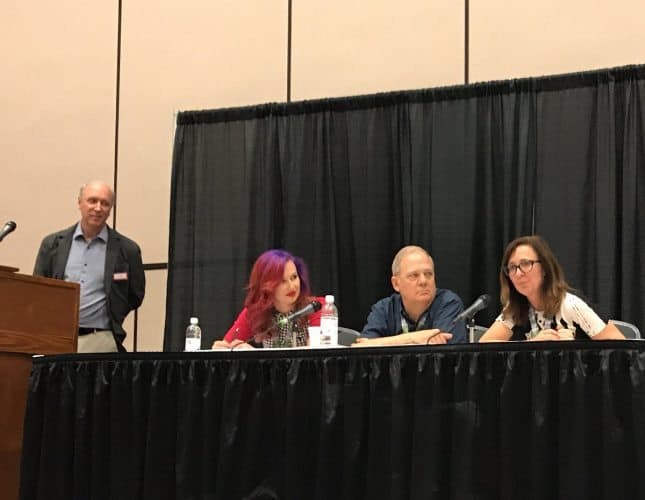
Editor’s Panel Notes Four Editors Share Advice on Getting Published
For anyone aspiring to be a travel writer, here is a useful summary provided by blogger Stephanie Patterson that provides a good road map to pitch GoNOMAD and other travel sites if you want to get your travel articles published. Here are some of the latest editor’s tips to help make your pitches more successful. This was from a presentation at the Travel Blogger’s Exchange Conference in Huntsville, AL in May 2017 .
Panel:
Bailey Freeman – Lonely Planet Destination Editor for Central America and the Caribbean
“Inspiring, yet achievable” content for readers
Max Hartshorne – Editor, GoNOMAD
“Relatable experiences and intriguing stories, destinations are key”
Tim Leffel— Editor Perceptive Travel and Luxury Latin America
Tracey Minkin – Travel Editor for Coastal Living Magazine (print and digital)
Each editor weighed in on what they want in submissions. Tracy said looks for unique, special, experiential travel next to a major body of water
Coastal Living’s print content is dreamy, inspirational featuring beautiful storytelling. Digital content is service-based, bringing to life destinations while being direct and concise, yet comprehensive. Digital content should be attention grabbing and hold, in addition to beautiful and engaging. Digital content includes one video per story.
10 print issues a year, a new digital piece published daily.
Pitching do’s and don’ts
DOs:
Pay attention to the writer’s guidelines for the publication you are pitching for
READ the publication and research content that has previously been published
Cater your pitch to the publication
Don’t expect the editor to know who you are—introduce yourself in your pitch or query letter
Be concise
Make sure you are emailing the right person, you can usually find contact information and titles on the website of the publication you are pitching
Pitch about destinations you’ve already been, not trips you’re planning to take
DONTs:
Never call an editor, always email
Don’t pitch something that is in no way relevant to the publication
Don’t ask an editor to go to your blog for examples of your work, include links to examples of your work instead
Never pitch guest posts
Don’t pitch content that has already been covered by the publication in the past
No spelling or grammar errors! Spell check before sending
Don’t pitch press trips, many publications don’t accept these
Crafting your pitch
Subject line:
Always include the word pitch and the story title/summary as your subject line. Your subject line
should include what the pitch is about.
First paragraph:
Introduce yourself. Who are you? Why are you qualified? Where have you been?
Second paragraph:
What is your story? Summarize your pitch in several sentences. DO include whether or not you have original images, video, etc as well as when you took the trip.
Third paragraph:
Provide a summary of your experience as a writer with several links to your best work.
Keep it short, to the point, and clean. Spell check!
Attachments?
 Include a link to a dropbox folder, or Google Photos Album, or attach one compelling image along with your pitch. This really depends on the editor.
Include a link to a dropbox folder, or Google Photos Album, or attach one compelling image along with your pitch. This really depends on the editor.
4. What editors are looking for:
Be NICE. Nothing the editor asks of you should ever be a problem to complete.
Be on time. Never miss your deadlines
Editors are impressed by contributors who can write and provide original photographs and video
Be ACCURATE. Take the time to fact check, follow up with your sources, provide correct links, etc. Verify the information local guides give you on tours.
Always write completely original content, and do not plagiarize yourself. Don’t pitch a story you’ve already written for someone else or on your blog
Have a specialty
Talk to people on your travels and include those voices in your story, get out of your comfort zone!
Remember: journalism is about the READER, not the writer
When to follow up
It is fine to follow up with an editor if you haven’t heard back on your pitch. Wait about three weeks before sending a follow-up email.
Writer’s Guidelines:
Lonely Planet
Perceptive Travel
GoNOMAD Travel
Coastal Living
